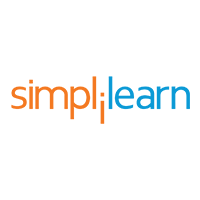The Ultimate Guide To Know All About Tableau

Tableau is a leading data visualization tool used for data analysis and business intelligence. Gartner’s Magic Quadrant classified Tableau as a leader for analytics and business intelligence. This Tableau tutorial will cover a wide range of how-to topics, including how to create different charts and graphs, in addition to visualizing data through reports and dashboards in Tableau to derive meaningful insights.
What is Tableau?
Tableau is an excellent data visualization and business intelligence tool used for reporting and analyzing vast volumes of data. It is an American company that started in 2003—in June 2019, Salesforce acquired Tableau. It helps users create different charts, graphs, maps, dashboards, and stories for visualizing and analyzing data, to help in making business decisions.
Tableau has a lot of unique, exciting features that make it one of the most popular tools in business intelligence (BI). Let’s learn more about some of the essential Tableau Desktop features. Now that we know what is tableau exactly, let us understand some of its salient features.
Tableau Features
- Tableau supports powerful data discovery and exploration that enables users to answer important questions in seconds
- No prior programming knowledge is needed; users without relevant experience can start immediately with creating visualizations using Tableau
- It can connect to several data sources that other BI tools do not support. Tableau enables users to create reports by joining and blending different datasets
- Tableau Server supports a centralized location to manage all published data sources within an organization
Read More: When Shamanth Kumar’s journey took him from Industrial Engineer to Assistant Manager for Data Analysis, he knew he wanted to learn more about data than just Excel. His search took him to our Tableau Certification Training Course. Read more about this journey and his experience with our course in his Simpliearn Tableau Course Review.
Tableau Product Suite
|
Product |
Version |
Features |
|
Tableau Desktop |
Paid |
Tableau Desktop helps to create reports, dashboards, and stories using different charts and graphs. The workbooks and the dashboards created using Tableau Desktop can be shared locally or publicly. |
|
Tableau Server |
Paid |
Tableau Server is mainly used in organizations to share workbooks and reports that are created using Tableau Desktop applications across different teams. You can ask questions with natural language, and you will receive AI-driven explanations for your data. |
|
Tableau Online |
Paid |
The Tableau Online analytics platform is hosted on the cloud, and it helps users publish dashboards and share discoveries with anyone. You can connect to cloud databases, like Amazon Redshift and Google BigQuery. It automatically refreshes data from web apps, like Google Analytics and Salesforce. |
|
Tableau Public |
Free |
Tableau Public is free to use, but the workbooks created cannot be saved locally. They can be saved to Tableau’s public cloud, which anyone can access and view. Due to the lack of privacy options, any user can download and access the files saved to the cloud. |
|
Tableau Reader |
Free |
Tableau Reader is a free desktop application that enables users to open and interact with reports built using Tableau Desktop. |
|
Tableau Mobile |
Free |
Tableau Mobile provides interactive previews where users can check data and reports anytime from anywhere. You can select, filter, and fine-tune the data with a tap of your finger using the mobile app. |
Installing Tableau Desktop
Knowing what is tableau is the first step, however how to install it follows right after. The following are the steps for downloading Tableau Desktop:
- Select the DOWNLOAD TABLEAU DESKTOP version option and select your operating system.
- Once you have downloaded the file, go ahead and install it.
- Launch Tableau Desktop, and it will show you the Tableau registration form, which is where you can register and activate your product.
- Enter your product key, or sign in to Tableau Server or Tableau Online to activate your Tableau license. Upon successful activation, you can start using Tableau Desktop.
File Types Used in Tableau
Next up in the what is tableau tutorial, we will learn about the various file types. In Tableau, you can save your work using various Tableau-specific file types. The following are the different types of files that Tableau supports:
|
File Type |
File Extension |
Description |
|
Tableau Workbook |
.twb |
The most commonly used file type in Tableau that has information about worksheets, dashboards, and stories. |
|
Tableau Packaged Workbook |
.twbx |
A packaged zip file that enables users to share their work with those who don’t have access to the original data. |
|
Tableau Data Source |
.tds |
These files are shortcuts for quickly connecting to the original data that you use often. It does not contain the actual data, but has the information needed to connect to the real data and any modifications you’ve made to the data. |
|
Tableau Packaged Data Source |
.tdsx |
A zip file that has the data source file and any local file data, such as extract files (.hyper or .tde), text files, Excel files, Access files, and local cube files. |
|
Tableau Data Extract |
.tde or .hyper |
This contains a local copy of a subset or entire dataset that can be used to share data with others when you have to work offline and improve performance. |
|
Tableau Bookmark |
.tbm |
This enables you to save worksheets and share them with others so that they don’t have to create a new worksheet from scratch and can use it in their workbooks. |
Data Types in Tableau
Tableau primarily supports seven different data types. The data type indicates the type of information stored in a particular field.
|
Data Type |
Icon |
|
Text (string) values |
|
|
Date values |
|
|
Date & Time values |
|
|
Numerical values |
|
|
Boolean values |
|
|
Geographic values |
|
|
Cluster Group |
Connecting to Data Sources in Tableau
Tableau is capable of connecting with a wide range of data sources. It can connect to files present in your system, such as Microsoft Excel, text files, JSON, PDF, etc. It can also work on data present on a database server, such as Microsoft SQL Server, MySQL, Oracle, Teradata, etc. There are other saved data sources that Tableau can connect with. It also can connect and fetch data from cloud sources, like AWS, Azure SQL Data Warehouse, and Google Cloud SQL.
The following is an example of importing an excel file to Tableau Desktop.
Under Connect, click on Microsoft Excel. Locate the Excel file present in your system, which will export the dataset into Tableau. As you can see below, we have imported the Sample – Superstore dataset. Now, drag the required sheets under the “Drag sheets here” space.
Now, if you click on Sheet1, you can see all the fields of the dataset under Dimensions and Measures.
Tableau Desktop Interface
Next up in the what is tableau tutorial, let us understand all about its interface. Tableau Desktop’s interface, or the workspace, consists of menus, a toolbar, cards, shelves, data and analytics pane, different sheets for creating reports, dashboards, and stories.
The following is what the Tableau Desktop interface looks like:
Dimensions and Measures in Tableau
Once you load a dataset, Tableau automatically divides the data into dimensions and measures. You can see this in the workspace area under the data pane.
Dimensions are usually categorical fields that cannot be aggregated, while measures are numerical fields that can be measured, aggregated, or manipulated.
Dimensions are marked in blue, while measures are marked in green.
What is Tableau Tutorial: Creating visualizations
1. The following is a simple table that will analyze sales and profit for different subcategories of products across various regions.
2. The horizontal bar chart below shows sales of different subcategories of products with the color of the bars indicating the profit. Sort the sales axis in descending order and change the color of the bars using a different palette.
Phones made the highest amount of sales, while copiers had the highest profit.
3. The side-by-side bar chart is used to visualize sales and profits for different subcategories of products under each category.
4. A dual-axis chart will analyze sales and profits by order month. Drag the order date field on to columns shelve and profit field on the right corner where you see a green rectangle. Synchronize the profit axis and change sales to bars.
The month of November had the highest amount of sales, while January had the least.
5. A blended axis chart is used for comparing two measured values against the same axis.
The blended axis chart enables users to forecast the data for making future predictions. Go to the analytics pane and double-click on forecast.
Tableau enables users to create hierarchies using data fields, which makes it easy to break down the visualization and organize data in a logical order. The following is an example of creating a location hierarchy using country, state, and city fields. You need to drag a field and drop it directly on top of another field and give a name to the hierarchy.
6. The highlight table in Tableau helps users compare data using colors.
7. Maps in Tableau help users visualize geographic data and analyze certain measure values. The following is an example of analyzing sales and profits across different states in the US. Drag the country field on to the view and expand it to see all states.
Drag sales on to the size card and profit on to the color card. Increase the size of the bubbles for sales and edit the color.
States marked in green made the highest profit, while those marked in orange made the least amount of profit. This shows that California has the highest sales and profit, followed by New York. It also reveals that Texas made a decent amount of sales, but overall, made the least amount of profit.
You can also change the map into a filled map by selecting “map” from the marks card.
Take your data analysis skills to the next level and learn how to use Tableau to uncover insights, identify trends, and make informed decisions. Our free course will teach you how to connect to your data, create interactive dashboards, and share your findings with others.
Building Dashboards Using Tableau
A Tableau dashboard is a collection of several charts and graphs from different worksheets. It provides a single view for analyzing the entire business dataset.
To create a dashboard in Tableau, click on the “New Dashboard” tab at the bottom.
Drag all desired worksheets to the dashboard view and adjust all the sheets so that everything looks clean and organized.
As you can see, we have four sheets placed on the dashboard. There is a bar chart, a dual axis chart, a map, and a treemap that provides a clear picture of sales and profit across different regions, states, order dates, categories and subcategories of products.
You can use them as a filter to view the visualizations for a certain category of product, region or a state. In our demo, we’ll use the state wise sales for our filter.
We have selected California to filter data across different visualizations on the dashboard. The dashboard reflects the sales, profit, and other measures for different categories of products in California.
Master data visualization, business intelligence tool and advance your career in analytics with the Tableau Certification Training Course. Enroll now.
Conclusion
In this what is tableau tutorial, we covered all about what is tableau exactly, how to download it to file types to data types and so much more. We wrote this comprehensive guide to help users with creating interactive reports and dashboards using business data, which derives meaningful insights for making important business decisions.
If you have any questions, please leave a comment below To learn more about what is Tableau, the following video provides an in-depth guide to this all-inclusive data tool: : https://www.youtube.com/watch?v=fO7g0pnWaRA&t=1223s
Want to Become An Expert Tableau User?
If you’re an aspiring data analyst or data scientist, knowing Tableau is a must. Check out our Tableau Certification Training Course today to learn everything you need to know about this powerful tool.



